Bangkok, Thailand: Insider Tips for Planning Your Trip
A local resident shares his tips for places to visit in Bangkok, where to stay, getting around, and where to get the best street food.
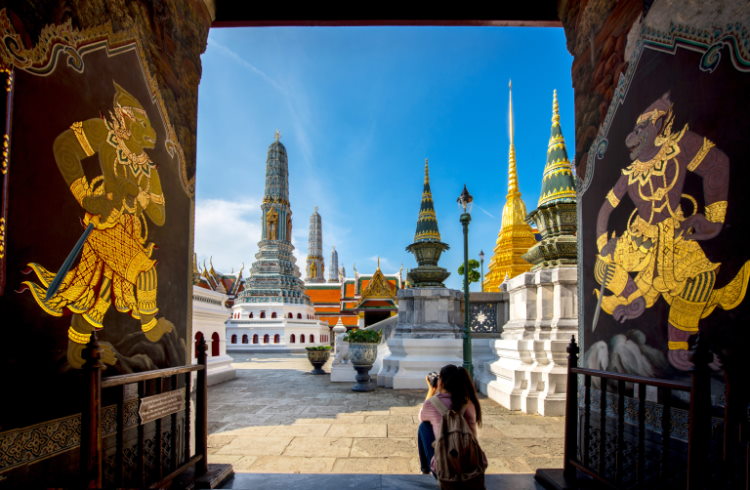 Photo © Getty Images / Chadchai Ra-ngubpai
Photo © Getty Images / Chadchai Ra-ngubpai
One of the world’s most-visited cities, Bangkok has deep history, wonderful architecture, incredible food, and renowned nightlife. It’s also a giant, sweltering, and sometimes bewildering place. If you plan on visiting Bangkok, here are my travel tips to help you navigate the city where I’ve lived on and off for a decade.
- Public transportation in Bangkok
- Where to stay in Bangkok
- Visiting Bangkok’s famous temples
- Shopping center food courts are a secret wonder
- Where find the best street food in Bangkok
Public transportation in Bangkok: how to bypass the nightmare traffic
A gargantuan metro area of more than 15 million people, the Thai capital is horrendously difficult to navigate by road. Because it’s not laid out on a grid like many Western cities, Bangkok is plagued by a huge quantity of dead ends. This greatly reduces the number of routes vehicles can take, and so funnels traffic onto main thoroughfares.
As a result, it takes forever to get around by taxi. A 3mi (5km) drive, for example, might take anywhere from 20 to 60 minutes, and I’ve found you can never predict how long such a trip will take. I’ve driven the same route at the same time of day and had it take four times longer, for no discernible reason.
Sometimes, you’ll need to take a taxi, such as when heading to and from Bangkok’s two international airports. But at other times you can avoid Bangkok’s traffic by using its clean, modern, and cool underground and Skytrain systems. They reach most of central Bangkok, run like clockwork and cost only between THB 16 – THB 66 (USD 50c - $2) for a one-way fare.
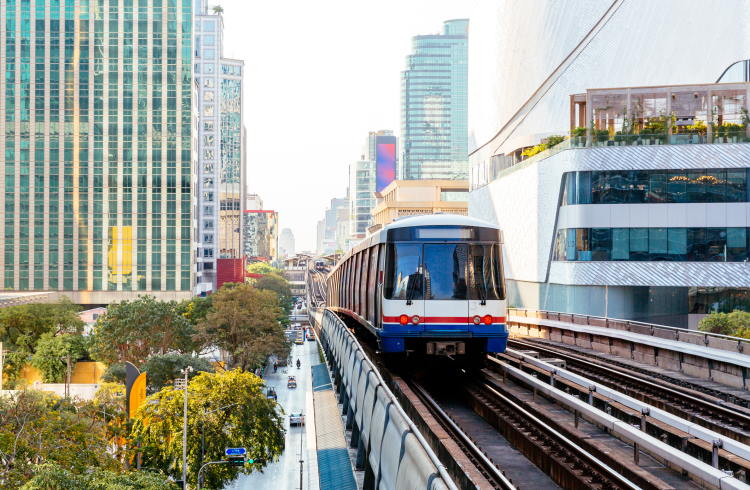
Where to stay in Bangkok
Bangkok’s layout can be confusing because it doesn’t have a defined center. Instead, it has several hubs – clusters of skyscrapers surrounded by shopping, entertainment, dining, and accommodation options. Some of its key hubs are Asoke, Silom, and Siam.
I always recommend friends and family stay in Asoke or Silom because they have both underground and Skytrain stations, which greatly increases the number of locations you can visit without having to wade into Bangkok’s awful traffic. Although, if your focus is on exploring Bangkok’s ancient sights, you should consider staying near the new Sam Yot or Sanam Chai underground stations, which give easy access to the city’s historic Rattanakosin area.
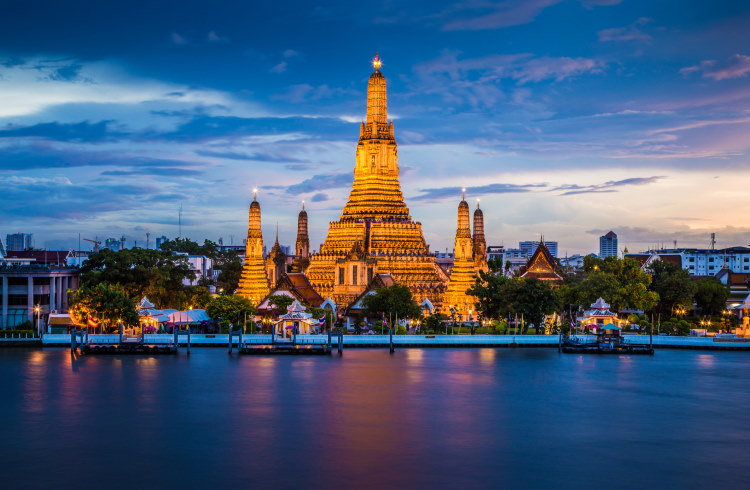
Visiting Bangkok’s famous temples
Bangkok’s shimmering Buddhist temples are perhaps its biggest draw. As visitors wander the grounds of these religious sites, dazed by the majesty of their architecture, many would be unaware of the extraordinary tales they hide. Stories of magic, poets, evil, and mystery.
Within the sprawling grounds of the Grand Palace, Bangkok’s number one attraction, lies the gilded glory of Wat Phra Kaew temple. At the centre of this 18th-century masterpiece is Thailand’s most important artefact, the 2ft (66cm) tall Emerald Buddha. According to Thai mythology, this revered statue is imbued with such power that it for centuries has protected the country from evil and granted wishes to those who pray before it.
Not far away, in Bangkok’s Chinatown, another popular temple hid a priceless Buddha statue in plain sight for about 200 years. Each day tourists flow in and out of Wat Traimit temple to admire its massive, five-ton gilded Buddha. Yet for many generations, this statue was covered by stucco plaster, giving it an unremarkable appearance and concealing its enormous value.
The similarly beautiful Wat Benchamabophit temple, in the Dusit district, is embedded with the little-known story of two unsung Italian architects who changed the appearance of Bangkok in the early 1900s. Mario Tamagno and Annibale Rigotti were asked by the Thai Royal family to add European flair to the city, which they did via an array of stately mansions, palaces, libraries, railway stations, and temples.
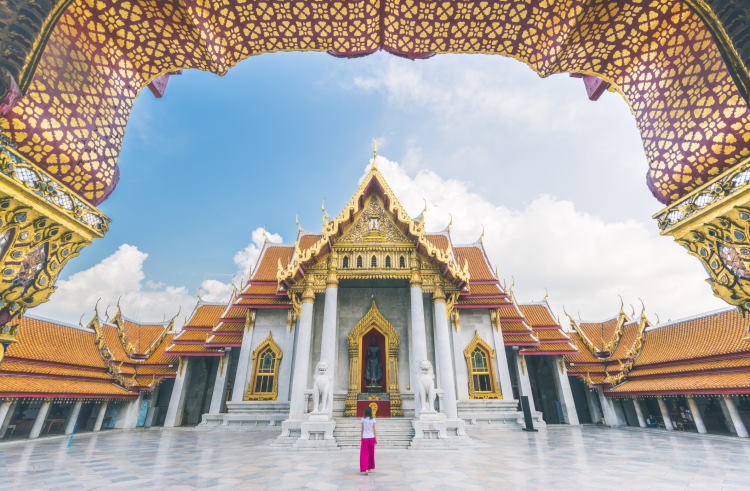
Meanwhile, the nearby Wat Thepthidaram temple, now a popular stop on Bangkok’s tourist trail thanks to its vibrant murals, was once the abode of Thailand’s controversial version of Shakespeare. Behind that temple tourists can visit a small museum dedicated to Sunthorn Phu, the greatest poet in Thai history, whose life was fractured by adultery, alcoholism, incarceration, and a fight with a King.
Shopping center food courts are a secret wonder
Visitors travel from around the world to eat street food at Bangkok’s famous roadside stalls. So, here’s a surprise: many Bangkok locals prefer shopping center food courts, which are cheaper and more comfortable than street dining, and serve similarly great food.
I was shocked when my Bangkok born-and-raised wife revealed this secret, because back home in Australia, food courts are infamous for bland cuisine and heart-clogging fast food. Whereas in Thailand, they have a great reputation.
In fact, Thailand’s food courts are so popular that shopping centers use them as magnets to draw people inside. They position them on the top floor so that, on the way to and from your meal, you must walk past lots of shops, which pleases the shopping center’s tenants.
To keep food court customers satisfied, Thai shopping centers headhunt talented street-food cooks, offer them cheap rent to set up in their food court. and subsidize the cost of their food so it’s even cheaper than the meals you buy on the street.
As a result, you can get a delicious meal for just THB 33 (USD $1), all in air-conditioned comfort. Bangkok’s extreme heat and humidity makes this more attractive to many locals than sweating over a meal on the street.
Where to find the best street food in Bangkok
Regardless of the strong appeal of food courts, traditional Thai street food should not be missed. If you haven’t visited Asia before, then dining on the street or within a teeming open-air market will be a unique and memorable experience, particularly if you head to Yaowarat, Silom Soi 20, or Nang Leong Market. Each evening, food seems to explode from every nook of these three locations.
Yaowarat, also known as Chinatown, is a sprawling neighborhood which has countless alleys brimming with vendors selling my favorite comfort foods such as Kway Teow fried noodles and Kha Mu braised pork leg. When I visit Silom Soi 20, a narrow road lined by more than 20 street food operators, I favor its excellent Kuay Jab noodle soup and Khao Man Gai chicken rice. And for traditional Thai snacks, I visit Nang Leong market. There I slowly wander its stalls while grazing on Thong Yip egg dessert, deep fried bananas, or Nang Kai fried chicken skin.

Related articles
Simple and flexible travel insurance
You can buy at home or while traveling, and claim online from anywhere in the world. With 150+ adventure activities covered and 24/7 emergency assistance.
Get a quote

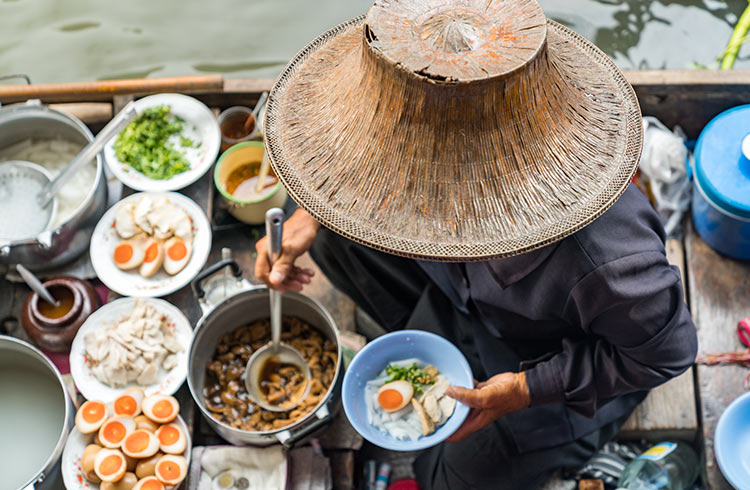
No Comments